Ever considered Cottonwood for your woodworking project? Discover why this underestimated wood might be your next favorite choice. Let’s dive in!
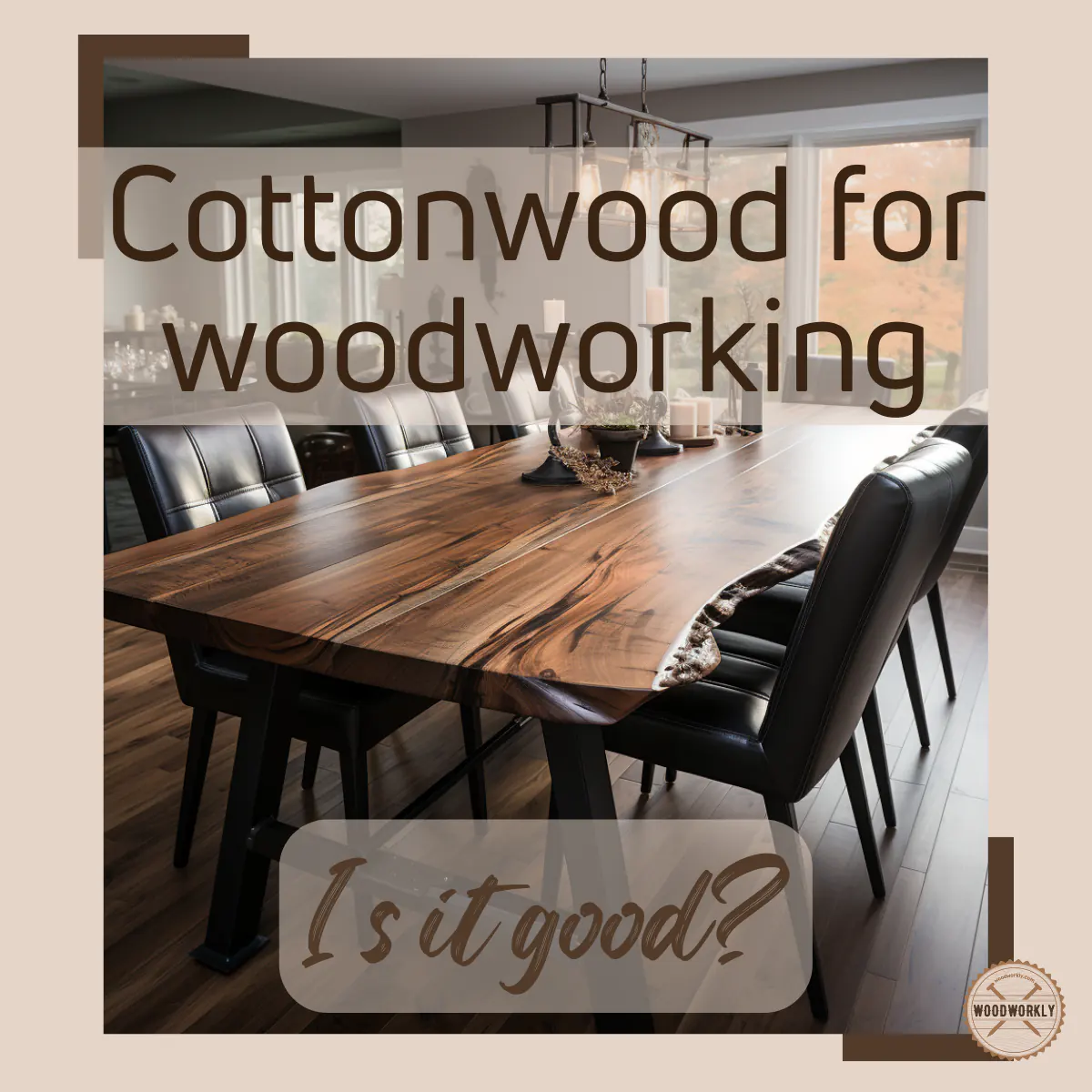
If you are interested in woodworking, you’ll know that many of us love working with various types of wood. Some types are common, while others are not.
Cottonwood is one such type of wood. When I was a beginner in woodworking, I was curious about working with cottonwood.
Now after using it for a long time for different woodworking projects, here’s what I know about, Is cottonwood good for woodworking?
Yes, Cottonwood is suitable for specific woodworking projects due to its lightweight, odorless nature, and easy workability. It’s commonly used for carving, making boxes, toys, and interior furniture parts. However, its strength is lower than other woods, making it less ideal for heavy-duty furniture.
But that’s just a quick snapshot of the question. Of course, this is dependent on the type of cottonwood you go with, though.

We have to consider the strength, stability, workability, and texture of wood that going to use before making some special furniture for our house.
Therefore, we need comprehensive knowledge about all aspects of cottonwood before beginning to work with it.
In this article, I’ll explore all the factors you should consider before choosing cottonwood for your woodworking project.
More importantly, I’ll discuss which woodworking projects align well with cottonwood, and which ones do not.
Let’s get going!

First of all, let’s get a brief knowledge about what is cottonwood.
What Is Cottonwood?
Cottonwood is a type of tree belonging to the Populus, or poplar, genus, specifically the section Aigeiros.
They are typically found in North America, Africa, and various parts of Europe and Asia, where they thrive along riverbanks and other areas with ample water supply.
Cottonwoods get their name from their cotton-like seeds, which float in the wind during the dispersal season, appearing much like snowfall.
These trees are known for their rapid growth and can reach considerable heights, with some species growing over 100 feet tall.
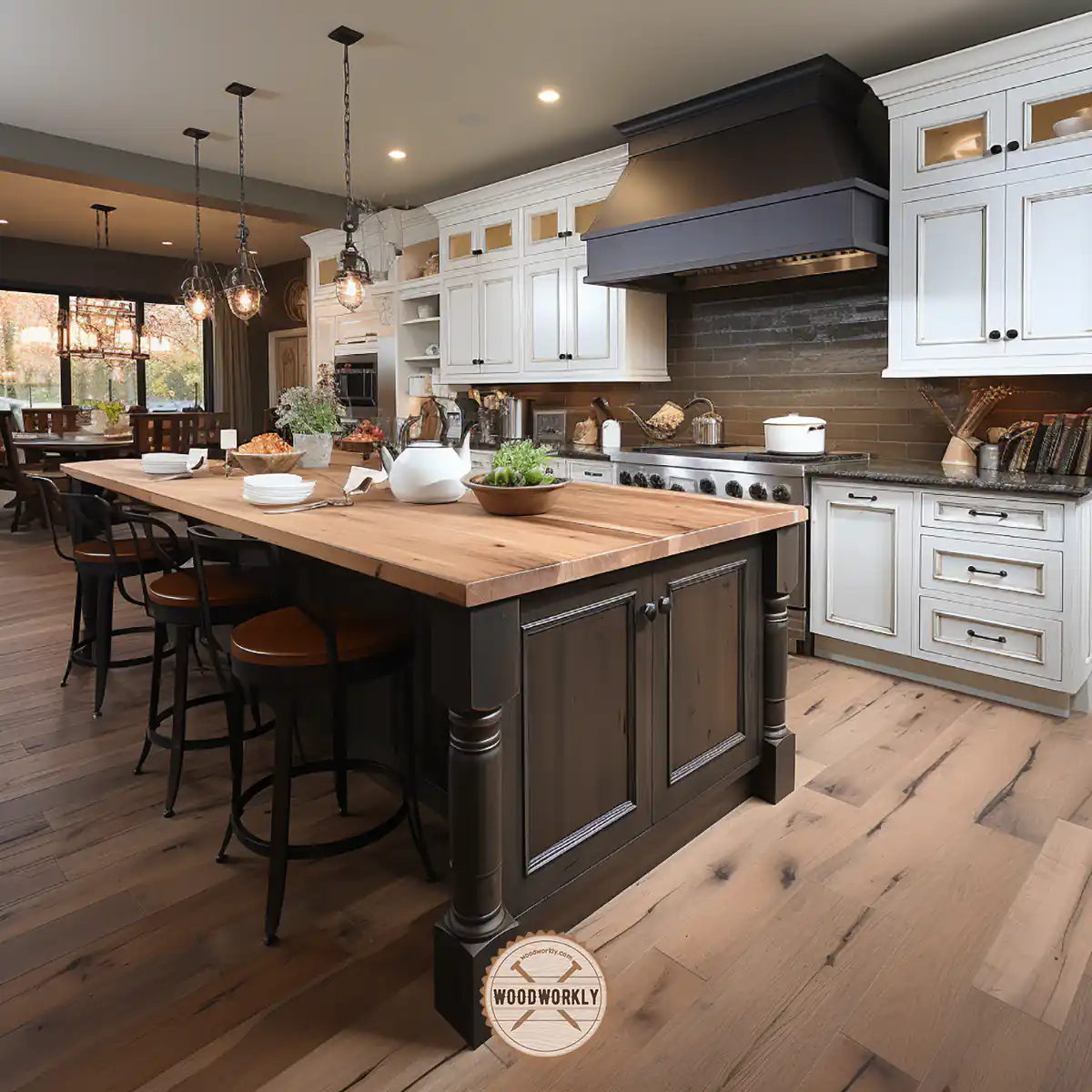
Is Cottonwood Good for Anything?
Yes, cottonwood is indeed good for a variety of uses.
It is a versatile type of wood with various applications due to its lightweight, odorless and tasteless nature.
It’s especially good for applications that don’t require a high degree of structural strength.
Here are some of the common uses of cottonwood:
- Carving: Cottonwood, especially its bark, is favored by carvers due to its softness and ease of working. Native Americans often use cottonwood roots for their Kachina dolls, and it’s also commonly used for making masks.
- Low-priced Furniture and Items: Cottonwood’s light weight and workability make it popular for crafting interior furniture parts, kitchen utensils, boxes, crates, and children’s toys.
- Pulp and Paper Industry: The wood from cottonwood trees is commonly used to create pulp for paper production due to its fibrous nature.
- Signage and Labels: Cottonwood’s ability to hold printing inks better than most woods makes it ideal for making shipping labels and logos.
- Wood Turning: It’s a decent choice for woodturning projects due to its softness, which makes it easier to shape.
However, despite these uses, cottonwood is not ideal for constructing weight-bearing furniture or outdoor structures, due to its lower strength and durability compared to other hardwoods.
Its susceptibility to decay and insect attack are also downsides to consider.
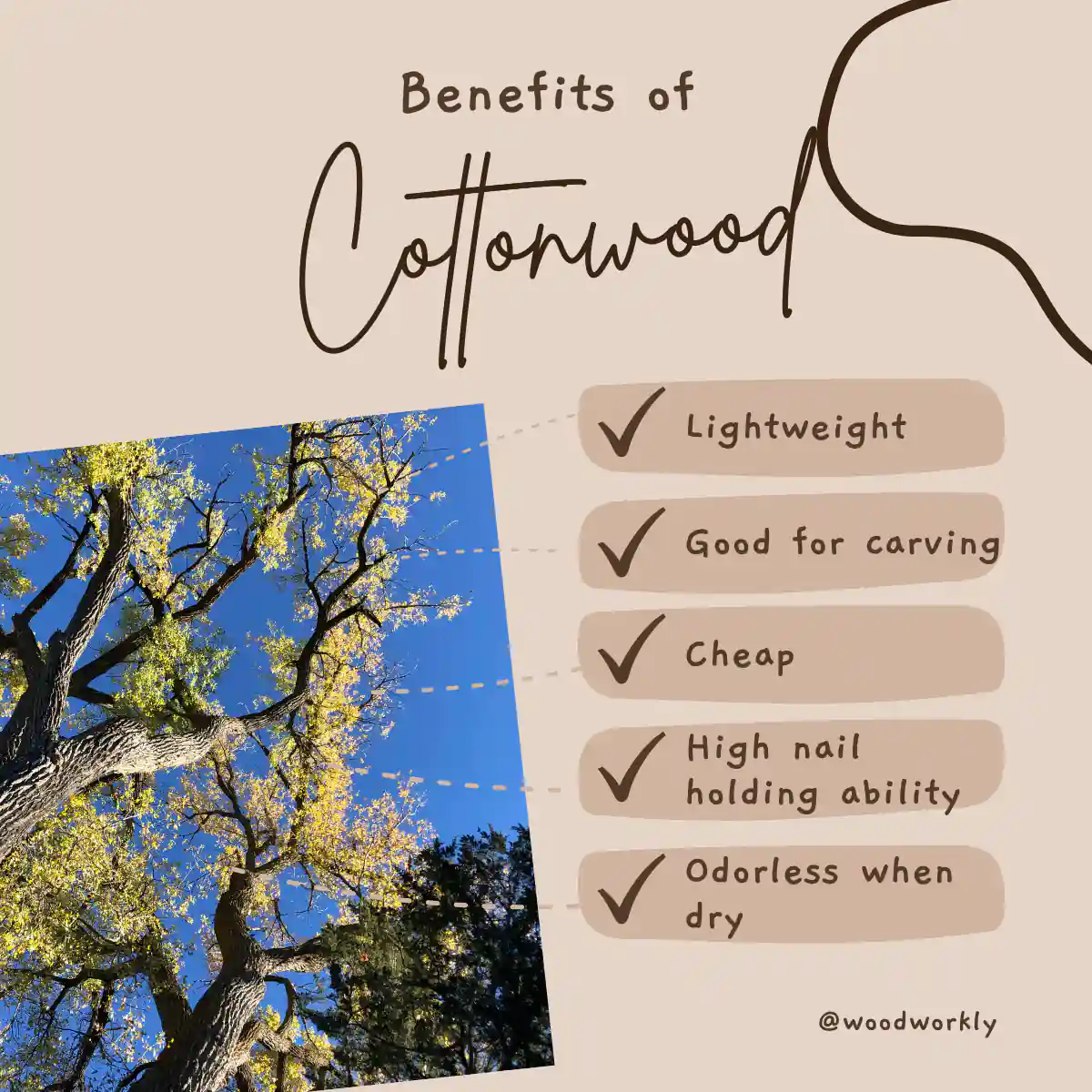
Is Cottonwood Good for Furniture?
Yes, cottonwood is good for furniture, but it may not be the best choice for all types of furniture, especially those bearing heavy loads.
While it is popular for interior furniture parts, carvings, and kitchen utensils such as cutting boards and spoons, cottonwood isn’t typically used for constructing full pieces of furniture like chairs or tables due to its lower strength and durability compared to other hardwoods.
Conttonwood lightweight nature makes it suitable for children’s toys and thin stock for stenciled or painted scroll saw projects.
In industry, it’s used for low-cost furniture items such as fruit baskets and boxes.
However, for indoor household furniture where durability, strength, and beauty are of paramount importance, other options like maple, oak, or birch are usually recommended over cottonwood.
It is always crucial to consider the specific demands and aesthetics of your furniture project when choosing your wood.
Many people think cottonwood is not particularly strong for furniture and isn’t tough enough to make a clean cut. Actually, that’s partially true.
But cottonwood is a hardwood that comes from a deciduous tree.
But there are some types of cottonwood used to build furniture rather than being useless.
In industry, cottonwood is used to make low-priced furniture such as fruit baskets, boxes, and outdoor fire pits. Cottonwood has similar properties and applications as basswood.
Cottonwood has the ability to hold printing inks better than most woods on the market, and because of that, they use it to make shipping labels and logos.

Now I’m going to share with you some pros and cons that I have learned by using cottonwood for various woodworking projects over the years.
Pros and Cons Of Using Cottonwood for Woodworking
| Advantages | Disadvantages |
| Lightweight | Weak in bending |
| No odor when dry | Strength is low |
| No taste | fuzzy surface |
| Good for carving | Require additional finishing |
| Easy to work with | Susceptible to insect attack |
| Cheap | Low-grade wood |
| Nail holding ability | Not resistant to decay |
| Deteriorate quickly if wet | |
| Hard to sand and stain | |
| Tears easily |
However, I highly recommend you not to use cottonwood for Indoor household furniture if you have better options like maple, oak, or birch.
Because the strength of cottonwood is low and it is very soft and stringy.
In the world of woodworking, cottonwood is known as junk wood as far as its beauty and strength.
Tip – After years of working with cottonwood, I found that you can eliminate the fuzz by sanding from 100, 150, and then 220grit. Also, make sure to sand the wood between three coats of salad bowl finish. Finally, you can achieve a very smooth surface with no fuzz at all.
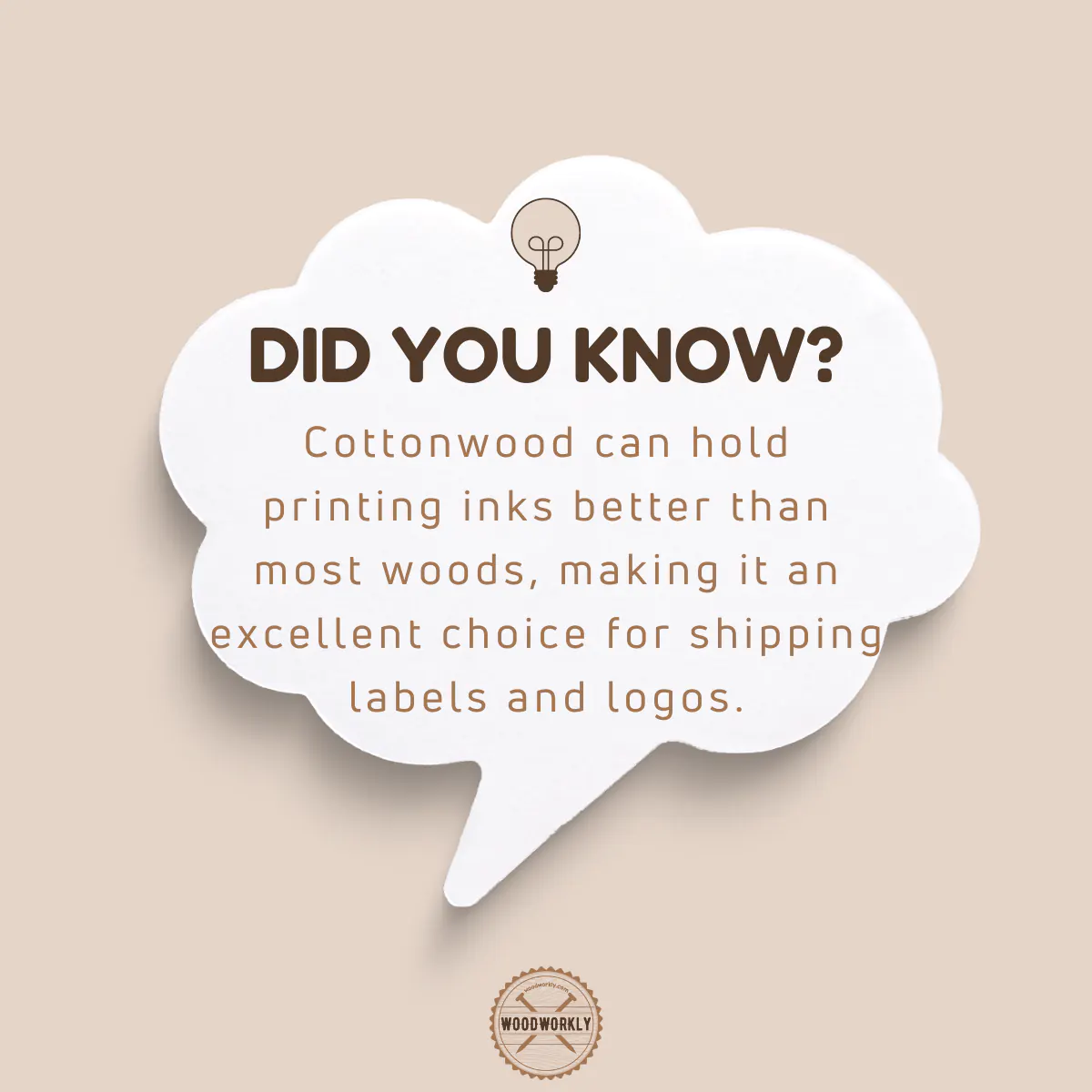
Characteristics of Cottonwood
- Color and texture: Grayish white to light brown. Discolor easily because of oxidation and fungal stain. Small porosity can be seen.
- Odor: Odorless when dry, but when wet smell like trash.
- Taste: No taste
- Workability: workability is god because it’s lightweight, But can tear easily. When cutting the wood fuzzy surface can appear.
- Blades and tools need to be sharp to get correct angles. Otherwise, you need to do additional work for finishing. Glues, nails are fine to work with cottonwood and dries easily.
- Durability: Less and can decay easily. Very low water resistivity. But better than pressboard.
- Drying: Dry quickly.
- Strength: strength is low because of its low density. The wood will not split when nailed close to the end.
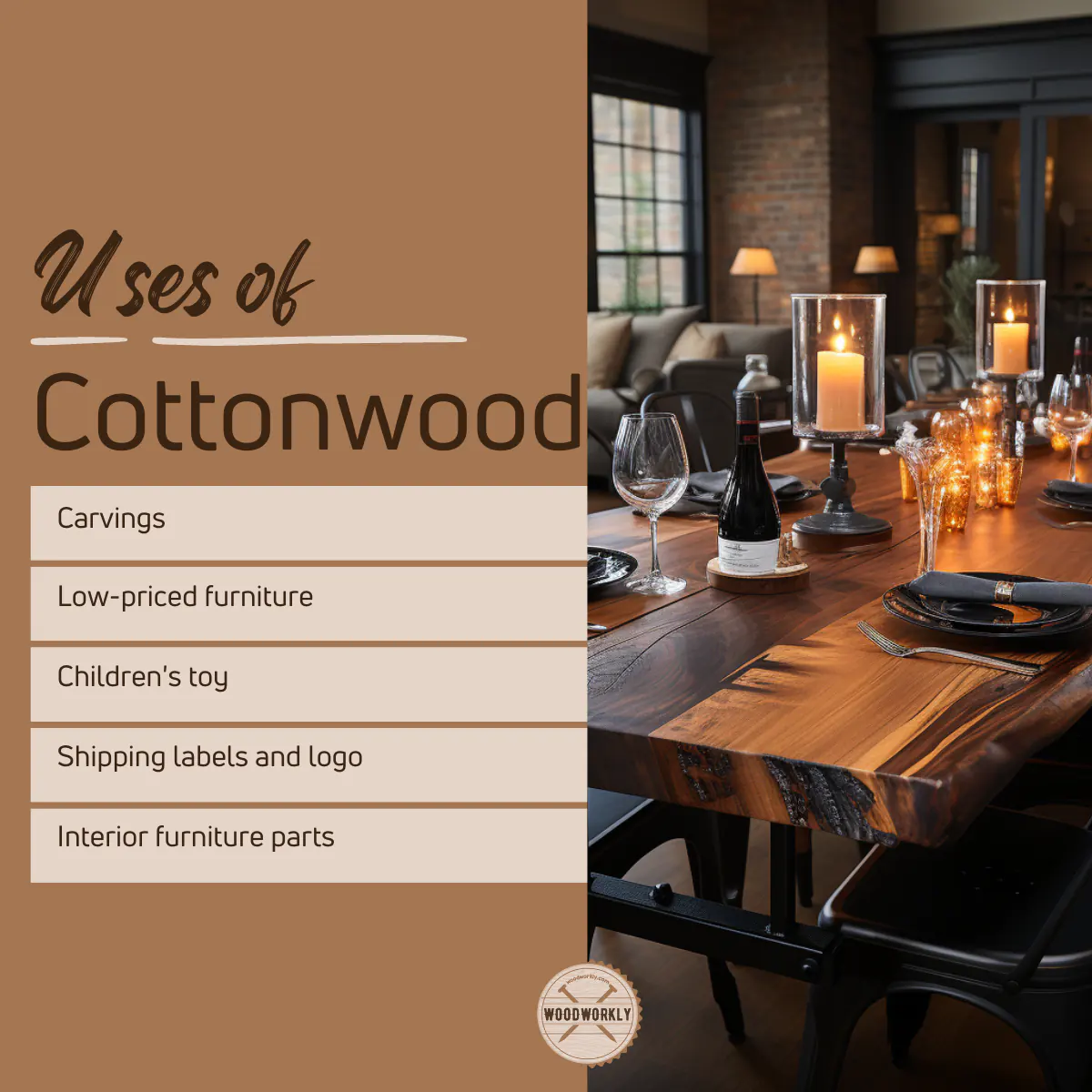
Types of Cottonwood & Uses
There are main 2 types of Cottonwood which have various applications.
For example, eastern cottonwood has better strength and black cottonwood have a good smell likewise. You can select the cottonwood as you wish according to your region.
I have researched more about types of cottonwood and their applications, which are tabled below.
| Type of cottonwood | Region | Application |
| Eastern cottonwood (Populus Deltoides) | Native to Europe. Can be found in Asia, Africa, different parts of the US | Casing, Cabinets, Interior parts of furniture, High-grade pulp for paper production, Core stock in plywood, Pallet boxes |
| Black Cottonwood (Populus Nigra) | Native to Europe. Can found in Asia, Africa, different parts of the US | Interior panels, Timber production |
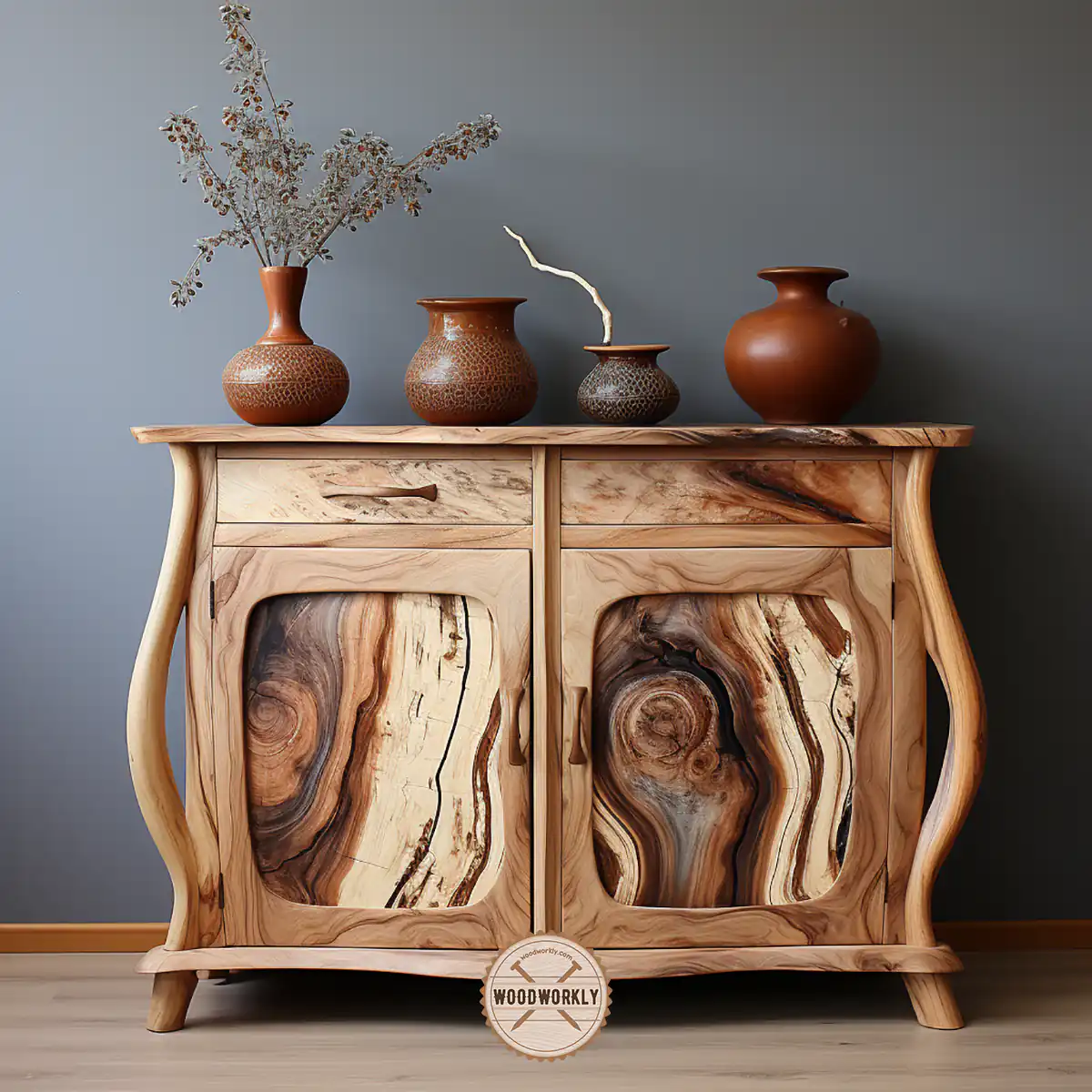
Cottonwood for Carving
Cottonwood is great to carve in. It is a softwood because the carving is super easy and also, you have to be careful when handling it.
Usually, cottonwood bark is much easier to carve the wood itself, because of its consistency.
Your tools need to be sharp. Native Americans mostly design their Kachina dolls from cottonwood roots.
both black and eastern cottonwood bark is very nice to carve when you remove the outside layers.
But you should be careful because stop cuts will tear and not cut and the cutting is not easy as regular wood.
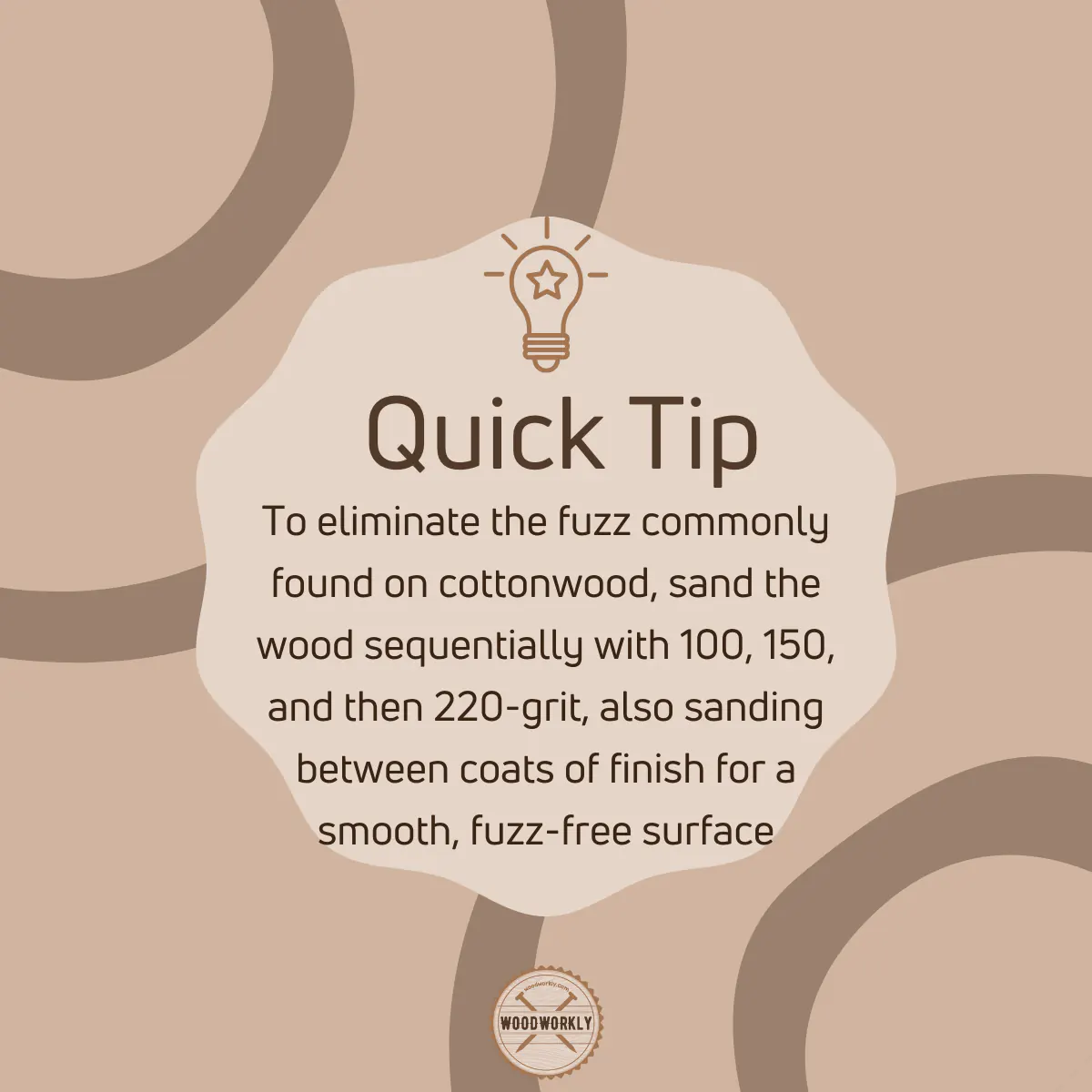
You can carve beautiful Indian heads, folk figures, wood spirits, Jayhawks, and fairy houses from cottonwood bark.
But they are so fragile and break off easily.
Cottonwood is considered one of the best woods for mask making along with basswood because of its lightweight, workability, and less expensiveness.
hen choosing cottonwood for your carving project, ensure that it is neither excessively porous nor punky, and is free from fungal infections or physical damage.
Porous, punky wood might be suitable for practice, but it could potentially splinter into pieces during the carving process due to its porosity.
Moreover, such wood tends to decay quite easily.
For a long-lasting carving, it is advisable to select cottonwood that is less porous.
If you’re a beginner working with cottonwood, I suggest seeking advice from an expert before selecting this type of wood for carving.
This is because the successful use of cottonwood requires practical experience and knowledge in order to select quality wood and avoid its undesirable qualities.
According to my personal experience, Cottonwood is one of the nearest things to a weed-grown tree.

Finishing Cottonwood
Finishing cottonwood projects is a common issue you will face, once you make something beautiful with cottonwood but it isn’t very shiny even after sanding and achieving a nice and smooth surface.
Most people try to apply raw linseed oil to get a shiny surface but finally, they come up with forming dry spots on the outside when the oil is disappearing.
If you have a woodworking project of cottonwood that require finishing, I suggest you get enough oil to cover the whole surface and let it stand for about 15 minutes, and dry in a warm dry place until the oil hardens.
Keep the woodwork for at least a day (24 hours).
After that, I suggest you add another coat to get the glossiness you want. Repeat this 4-5 times to get the maximum high glossy surface.
To polish the surface, wait at least a week or longer, this will also give you high gloss.
If you have already messed up the finishing part, re-sand the entire surface and start from the beginning.
This is the proper method I apply for the finishing of all my cottonwood woodworking projects.
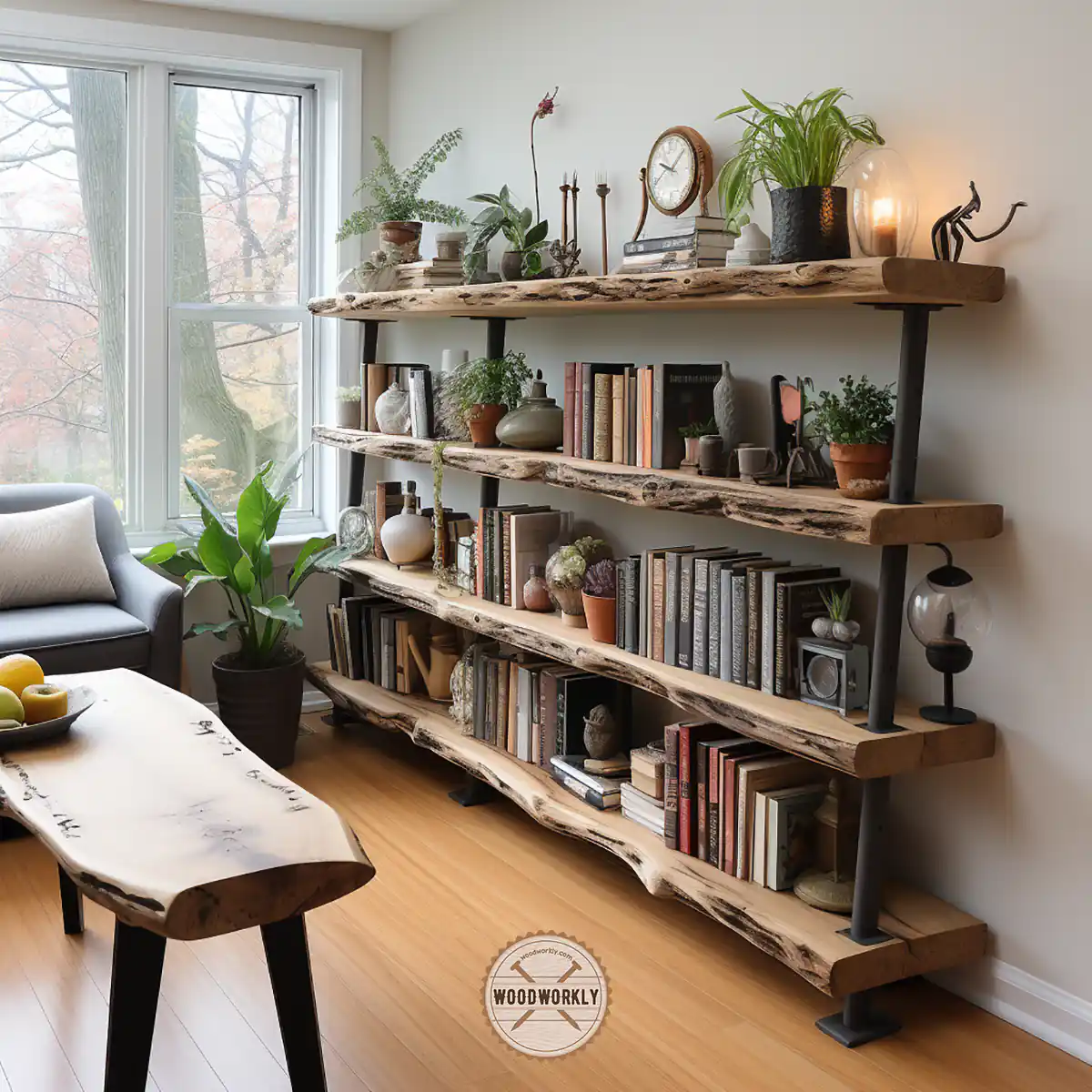
Is Cottonwood a Strong Wood?
Cottonwood is not a strong wood. It is one of the lightest wood types on the planet. But it has a good strength-to-weight ratio.
Cottonwood has poor shock absorbance as well. Therefore better not to use cottonwood for bookshelves, bedframes, and any other application that require carrying heavy loads.
The compressive strength and bending strength of Cottonwood are as follows,
- The compressive strength of Cottonwood is 33.854 Mpsi
- The bending strength of Cottonwood is 9,466 Mpsi
Is Cottonwood Good For Cutting Boards?
Cottonwood is good for cutting boards but only for decorative purposes. It is a non-toxic food-safe wood, but the problem is its poor strength.
Cottonwood cannot withstand sharp knife edges. It cracks and splits easily when pressure is applied.
but because of being an attractive wood type. cottonwood can blend with many other kinds of wood to make cutting boards.
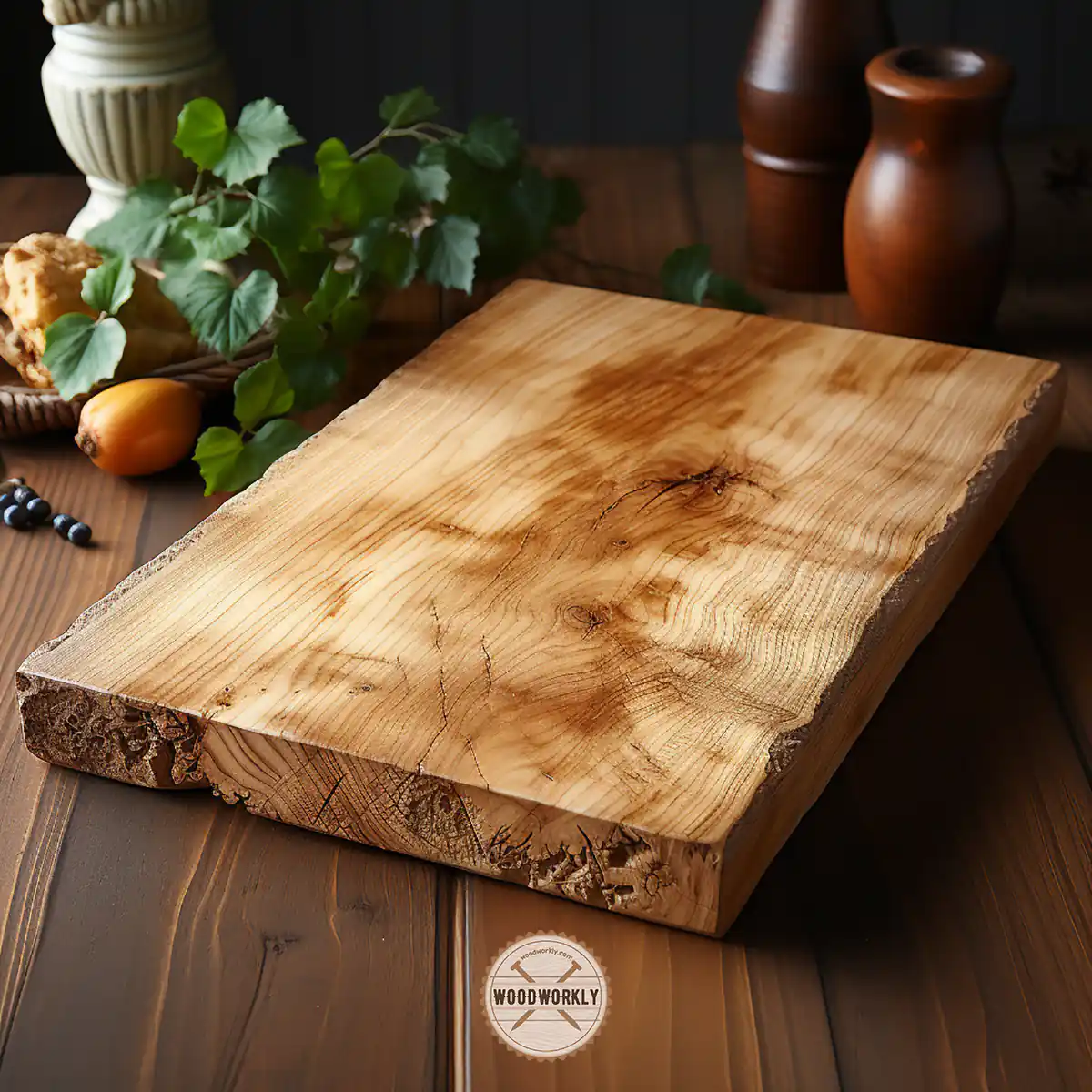
Can You Make a Table Out Of Cottonwood?
Yes, you can make tables, desktops, and desks from cottonwood since working with Cottonwood is super easy.
You can do all the woodworking tasks with cottonwood like nailing, screwing, and cutting with no issues.
Make sure to use sharp woodworking tools since cottonwood tends to split easily when working with unsharpened tools.
Is Cottonwood Good For Wood Turning?
Yes, Cottonwood is good for woodturning due its high workability. You can make any wood-turning and carving projects with cottonwood.
make sure to sharpen your wood-turning tools well to avoid them from blunting during the project.
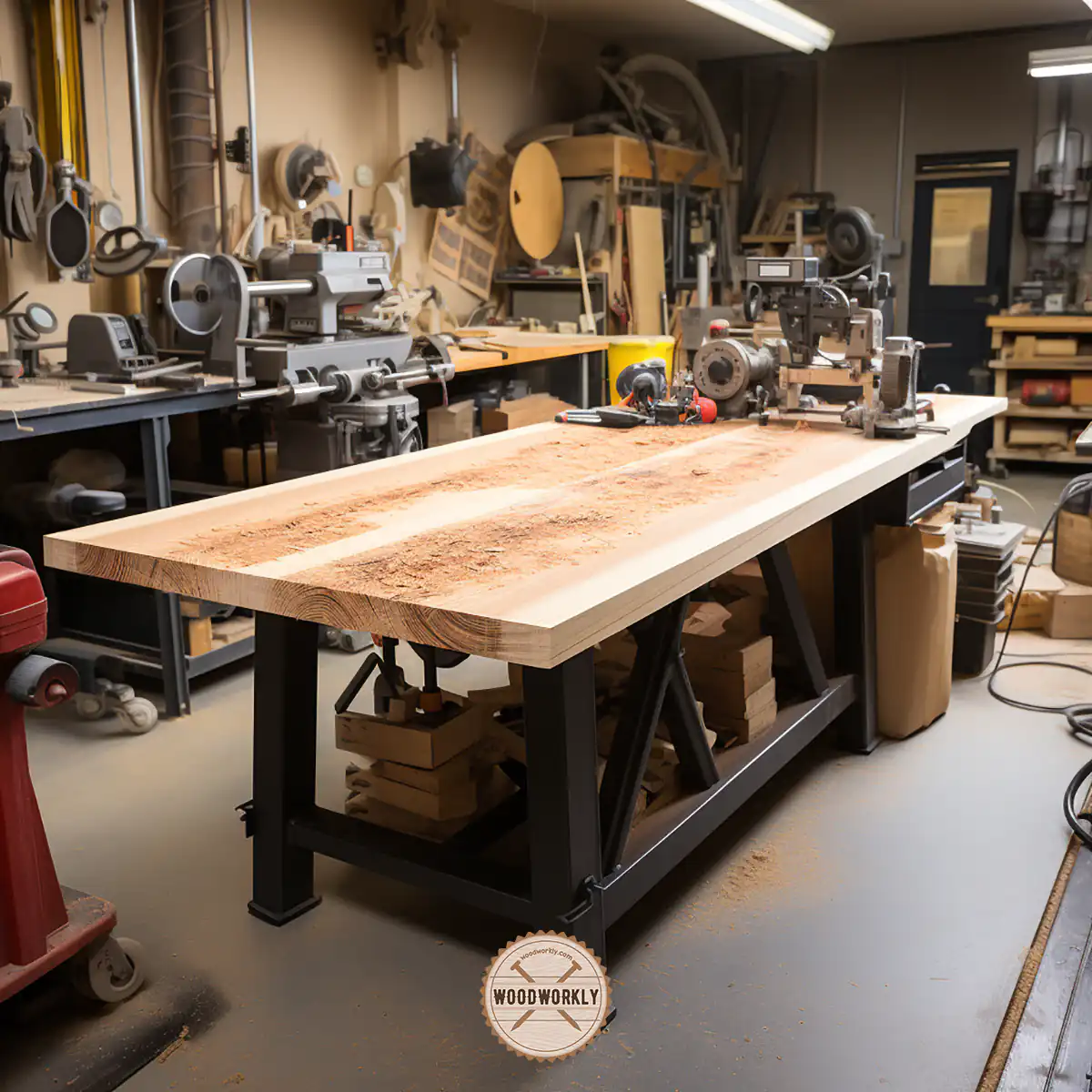
Is Cottonwood Good For Chainsaw Carving?
Yes, Cottonwood is good for chainsaw carving. It is easy to cut with a chainsaw and any other cutting tools and makes beautiful woodwork and furniture.
make sure your chainsaw is sharp enough to cut cottonwood since the wood tends to split easily with unsharpened tools.
That’s it, folks! hope you learned everything you wanted to know about, Is cottonwood good for woodworking?
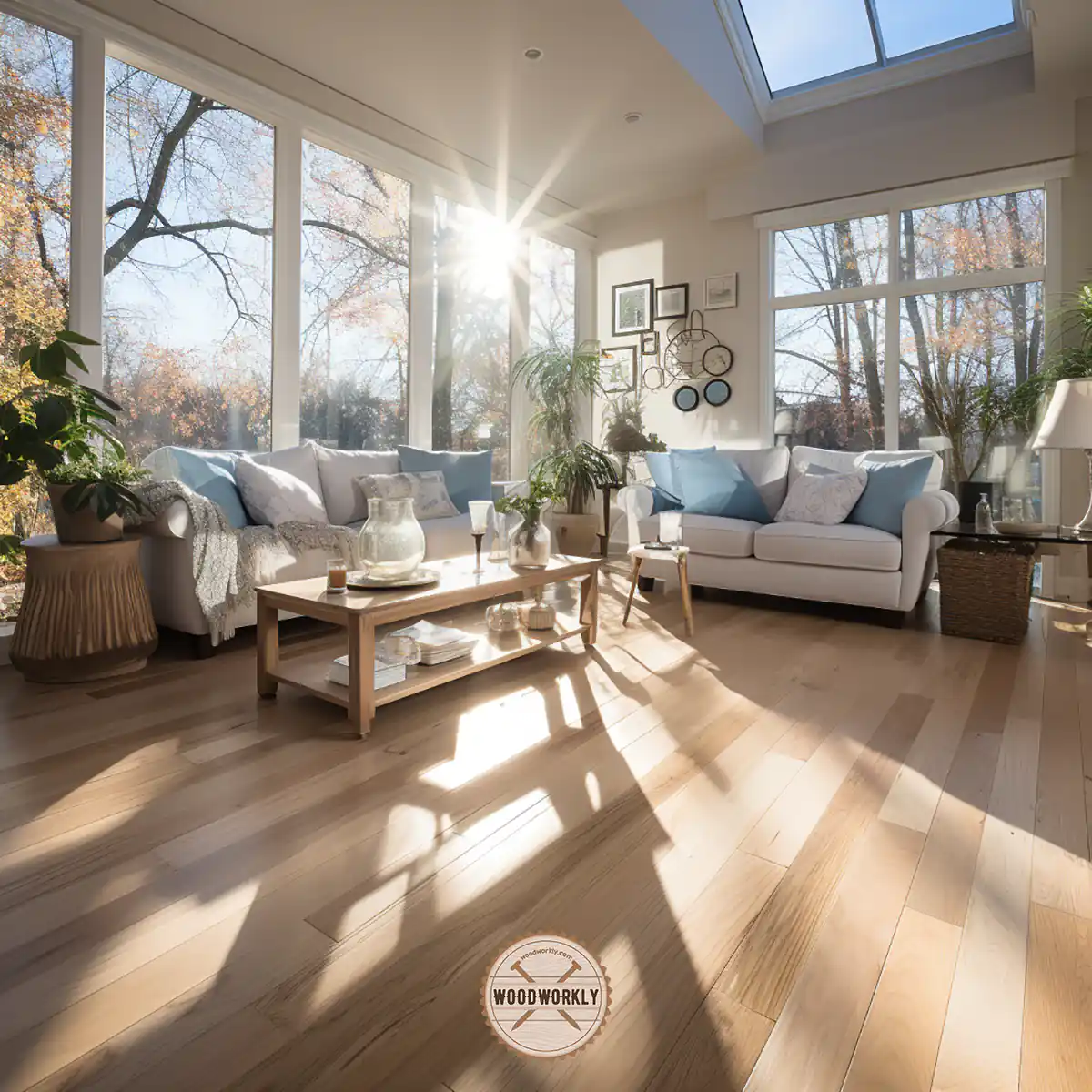
So, let’s answer some frequently asked questions as well.
FAQs
Can cottonwood be used outdoors?
Cottonwood isn’t the best choice for outdoor applications due to its low resistance to water and susceptibility to decay and insect attack. For outdoor use, more resilient and durable woods are recommended.
What’s the best way to finish cottonwood?
Finishing cottonwood requires applying multiple layers of oil, letting each coat harden in a warm, dry place before applying the next. This process enhances the wood’s natural beauty and provides a protective layer.
What are some disadvantages of using Cottonwood for woodworking?
The disadvantages of using Cottonwood in woodworking include its low strength, susceptibility to insect attacks, lack of decay resistance, and tendency to deteriorate quickly when wet. Additionally, its surface can become fuzzy, requiring extra effort in finishing.
Did I cover All You Wanted to Know About Is Cottonwood Good for Woodworking?
In this article, I have deeply discussed whether is Cottonwood good for woodworking and the advantages and disadvantages of using cotton for woodworking, and the types of woodworking projects you can do with cottonwood.
Cottonwood is suitable for woodworking, primarily used for carving, making low-cost furniture, and children’s toys due to its lightweight and easy workability. However, due to its low strength and durability, it’s not recommended for high-quality or weight-bearing furniture.
I went over types of cottonwood and why cottonwood use for carving and its workability as well.
On top of that, I dug deep to find the perfect finishing method for your cottonwood woodworking projects!
Cottonwood is an excellent wood for woodworking since it is easy to cut, lightweight, non-toxic, and finishes well.
You can make furniture, wood carvings, doors, and panels with cottonwood.
Remember, cottonwood woodworks are one of the lightest weights and inexpensive in the market, always do research before using cottonwood according to your woodworking plan.
Furthermore, I’ve answered some frequently asked questions as well.
Always be safe when woodworking, and always enjoy the woodwork you make!
Nice, thanks for the insight. I have some of this wood laying around that I tried using one time but had a heck of a time with finishing it. I see now why after reading your article so thanks for that. I may give it another shot now.
Best regards,
Don. P.
Thanks for the info. I have been looking for wood to make a sign for my cabin in northern Wisconsin, and just found a great offer on some large cottonwood cookies. I’m going to give them a try, hoping to use marine varnish or something to try to preserve the wood.
Betsy